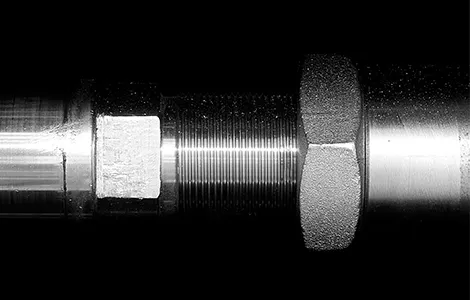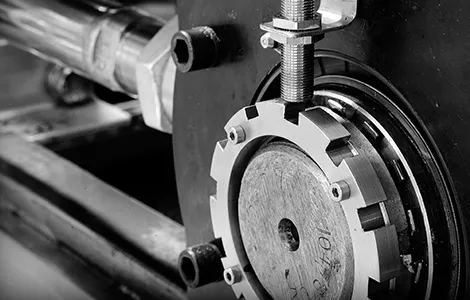Smart Belt Tracking Systems: How Automation and Data Are Changing Conveyor Alignment
November 03, 2025
In today’s high-performance manufacturing environments, every second of uptime counts. Conveyor systems, particularly steel belt conveyors, play a crucial role in maintaining continuous production, but even minor misalignments can lead to wear, product damage, and costly downtime. Traditionally, belt tracking has relied on manual monitoring and operator experience. However, with the arrival of smart technology, this process is evolving rapidly.
At PACE, we are embracing this transformation through advanced belt tracking systems that use automation and data-driven insights to improve accuracy, extend equipment life, and enhance productivity. The result is a new generation of belt tracking systems that work smarter, not harder.
The Evolution of Belt Tracking
Belt alignment has always been central to conveyor performance. Poor tracking can cause edge wear, belt damage, and increased maintenance demands. Conventional systems depend on mechanical adjustments and periodic inspections - a process that can be reactive rather than proactive.
Modern automation and data integration are changing this dynamic. Using intelligent sensors and networked control systems, today’s belt tracking systems can monitor real-time performance, detect deviations instantly, and automatically correct alignment before damage occurs.
This represents a major leap forward in operational efficiency, where decisions are guided by data rather than guesswork.
The Power of Sensors and IoT in Real-Time Belt Monitoring
At the heart of this new approach lies sensor technology and the Internet of Things (IoT). Sensors placed along the conveyor continuously collect data on belt position, tension, temperature, and vibration. This information is transmitted to a central monitoring hub, where automated algorithms evaluate performance in real time.
When the system detects a potential misalignment, it can:
- Alert operators immediately, allowing for rapid intervention before wear or damage occurs.
- Trigger automated actuators to adjust the belt’s position on the fly, keeping the system aligned without manual input.
- Feed long-term performance data into predictive maintenance software, helping engineers identify early signs of component fatigue or mechanical drift.
These capabilities turn what was once a reactive maintenance process into a predictive and preventive one.
Smart Features in Modern Tracking Systems
Smart belt tracking systems are designed with versatility in mind. Beyond basic alignment, they integrate seamlessly with wider factory automation platforms. Key innovations include:
- Closed-loop feedback controls that continuously adjust belt position for precise alignment under varying loads.
- Machine learning algorithms that refine performance over time by recognising patterns in belt behaviour.
- Wireless data connectivity for integration with plant-wide monitoring dashboards.
- Environmental adaptability, automatically compensating for temperature changes, material buildup, or belt elongation.
In environments where uptime and product quality are non-negotiable, these systems provide a measurable competitive advantage.
PACEMatic: Smart Tracking in Action
Our own innovation, PACEMatic, embodies this new generation of automated belt tracking technology. Designed as part of a broader intelligent ecosystem, PACEMatic integrates sensors, data analytics, and precision mechanics to maintain optimal belt alignment across a range of industrial applications.
PACEMatic’s automated controls react instantly to changes in belt position, while data logging tools capture detailed performance metrics over time. This data can be used to schedule maintenance more effectively, reduce unplanned stoppages, and identify trends that lead to performance improvements.
By incorporating PACEMatic into a production line, manufacturers can achieve:
- Reduced maintenance costs through predictive insights.
- Consistent belt tracking, even under demanding production conditions.
- Seamless integration with existing process control systems.
- Greater operational transparency and traceability.
In short, PACEMatic is not just a tracking solution — it is a building block in the future of automated production.
The Broader Benefits of Smart Belt Tracking
The shift toward smart, automated belt tracking systems delivers tangible benefits across industries:
- Increased uptime – Real-time correction minimises stoppages caused by belt drift or mechanical failures.
- Optimised maintenance – Predictive data allows for scheduled servicing before critical issues arise.
- Extended belt lifespan – Consistent alignment prevents uneven wear and mechanical stress.
- Enhanced safety – Reduced manual intervention lowers the risk of injury in high-temperature or high-speed environments.
- Sustainability – By minimising waste and improving efficiency, automated systems contribute to lower energy consumption and material use.
These improvements directly support modern manufacturing priorities — productivity, safety, and environmental responsibility.
Looking Ahead: Data-Driven Conveyor Systems
The integration of automation and data is only the beginning. As technology continues to evolve, the next generation of conveyor systems will combine predictive analytics with AI-driven diagnostics. This will enable even greater precision, self-learning capabilities, and system-wide optimisation.
PACE continues to develop solutions that align with this vision. Through advanced engineering and intelligent control, we are helping industries move beyond manual processes toward fully connected, automated production environments - where efficiency and reliability are continuously optimised.

